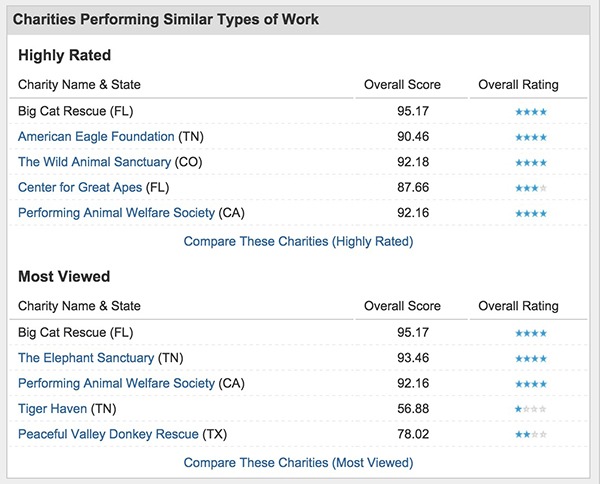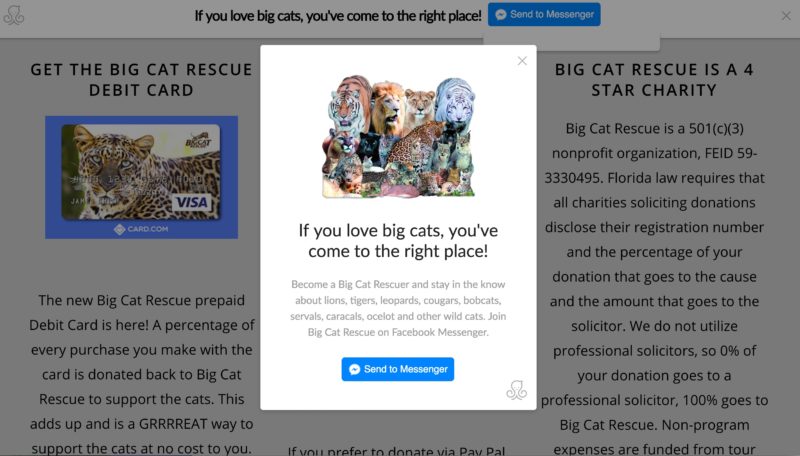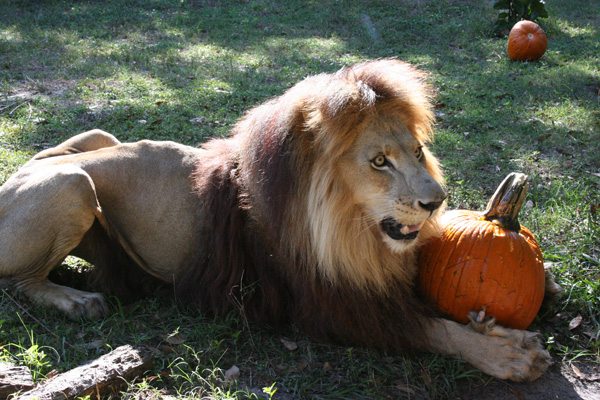Forces for Good
Forces for Good
Leslie Crutchfield and Heather McLeod Grant spent four years surveying thousands of nonprofit CEOs, conducting hundreds of interviews, and studying 12 high-impact nonprofits to uncover their secrets to success. The result was an intelligent, articulate analysis on how non profits, and those who donate to them, can make a lasting difference.
The book explained what non profits need to do, to achieve a far greater impact than they can do alone. It was validating to know that Big Cat Rescue is practicing all six of the primary strategies for being a high impact charity.
There are 2.2 million charities registered in America who are competing for about 1 trillion donor dollars. There are 30,000 or more new charities being formed each year, making it the third largest industry in the U.S. Donors are often confused about where their hard earned money should go, to do the most good, and the standards currently employed to determine good charities from bad, don’t have a good way to measure how much impact is made, by each dollar donated. Charity Navigator is considered THE place to go to get an unbiased opinion of the charities they have reviewed, and Big Cat Rescue ranks higher than any other exotic animal organization, so for us to say there is a better way to rank non profits comes from this position of recognition.

Forces for Good examined 12 great non profits (none animal related) that they felt did the most good, with the resources they had, and looked at what they have in common. Briefly, I’d like to outline the 6 practices the authors found to be most important and give a few examples of how Big Cat Rescue implements them.
1. Work with government to advocate for policy change, in addition to providing services.
Since 1998 Big Cat Rescue has been involved in changing laws to protect big cats, in addition to caring for hundreds of wild cats, that we have rescued from abuse and neglect. See what we are working on now at CatLaws.com
2. Harness market forces and see business as a powerful partner.
Cambridge University Press selected our article on Cause Related Marketing for their Professional English in Use Series textbooks called Professional English in Use – Marketing. It is a new addition to the Profession English in Use Series that is a self study reference book that was used for classroom work and tutoring. Cambridge included Baskin in their 2008 Who’s Who Among Executive and Professional Women “Honors Edition.” as well. Over the years we have found many for profit partners to work with, including Styx, C1 Bank and The Body Shop.
3. Create meaningful experiences for individual supporters, converting them into evangelists for the cause.
We give an inside look at all of our work to our supporters through guided tours, where they learn about the histories of our cats, to our weekly videos, to our many daily posts to social sites, to our live webcams. By involving our fans in the rescue, care and struggles of dealing with the plight of big cats, they can speak intelligently to others about ways to end the abuses that cause so many exotic cats to be in need of shelter. Through their evangelism we have won many monetary prizes, awards and a new Toyota Tundra.
4. Build and nurture networks and coalitions.
We share our knowledge and resources with other accredited sanctuaries so they don’t have to reinvent the wheel. We have created more than 20 “sanctuary in a box” Intranet sites with all of the training and operation manuals, as well as animal care documentation programs, to expedite the best possible conditions for captive wildlife. In 2009 we joined more than 40, much larger non profits as part of the International Tiger Coalition and in 2011 a smaller group of the same organizations came together to work on a 3 prong approach to ending the big cat crisis in America.
As part of that coalition, we have successfully petitioned USDA to end cub handling under the current criteria of the Animals Welfare Act, and have petitioned the USFWS to rescind their “generic tiger loophole” that allows the unbridled breeding of tigers for pay to play schemes. We have also been gaining momentum on a federal ban on the private possession of big cats. More about these efforts at BigCatRescue.org/cubs
5. Adapt to changing environments and are as nimble as they are strategic.
With more than 100 big mouths to feed, we survived the catastrophic effects of 9/11 which resulted in several years of virtually no donations to animal causes and no tourism. We were able to turn on a dime and figure out what we had to offer in that environment which saved our cats and enabled us to continue our fight to protect other wild cats from being used as pets, props and for their parts. Essentially what we did was to give people a way to feel good about what they could do in and environment that left many feeling fearful and as if they had no control over a global crisis.
6. Share leadership and credit and empower others to be forces for good.
If you don’t care who gets the credit for it, you can accomplish just about anything. Our coalition partners are some of the most well known in the industry and include the International Fund for Animal Welfare, the Humane Society of the United States, the World Wildlife Fund, Born Free, and the Animal Legal Defense Fund. While one or another of them may be the lead on our many efforts, we are all working together, and promoting each other’s campaigns, with the shared vision of a world where all wild animals live free.
Inside Big Cat Rescue we are able to operate leanly by having all animal care done by volunteers so that more than 80% of donations go to program services. With 14 paid staff, each person is essentially their own department and responsible for garnering the volunteer help they need to achieve their objectives. Each staff member is free to do whatever works best for them to get the job done, within the culture of Big Cat Rescue which is based on transparency, integrity and respect for all life. We all meet weekly to discuss issues we are working on to utilize the skills of each other to our best potential.
 Whether you’re a nonprofit leader, a philanthropist, a business executive, a donor, a volunteer, a board member—or simply interested in learning how to be a force for good—you’ll find something that inspires you to be an even more effective catalyst for lasting social change in this book.
Whether you’re a nonprofit leader, a philanthropist, a business executive, a donor, a volunteer, a board member—or simply interested in learning how to be a force for good—you’ll find something that inspires you to be an even more effective catalyst for lasting social change in this book.







